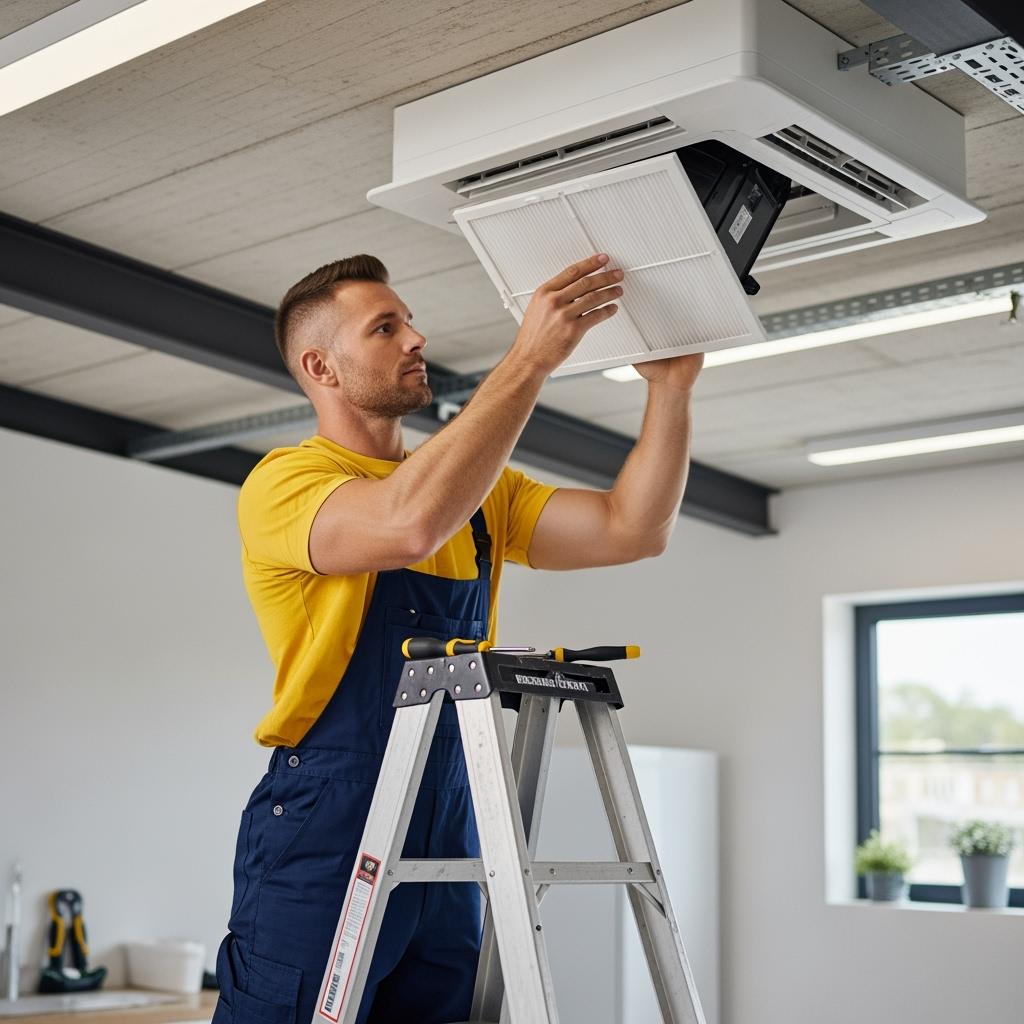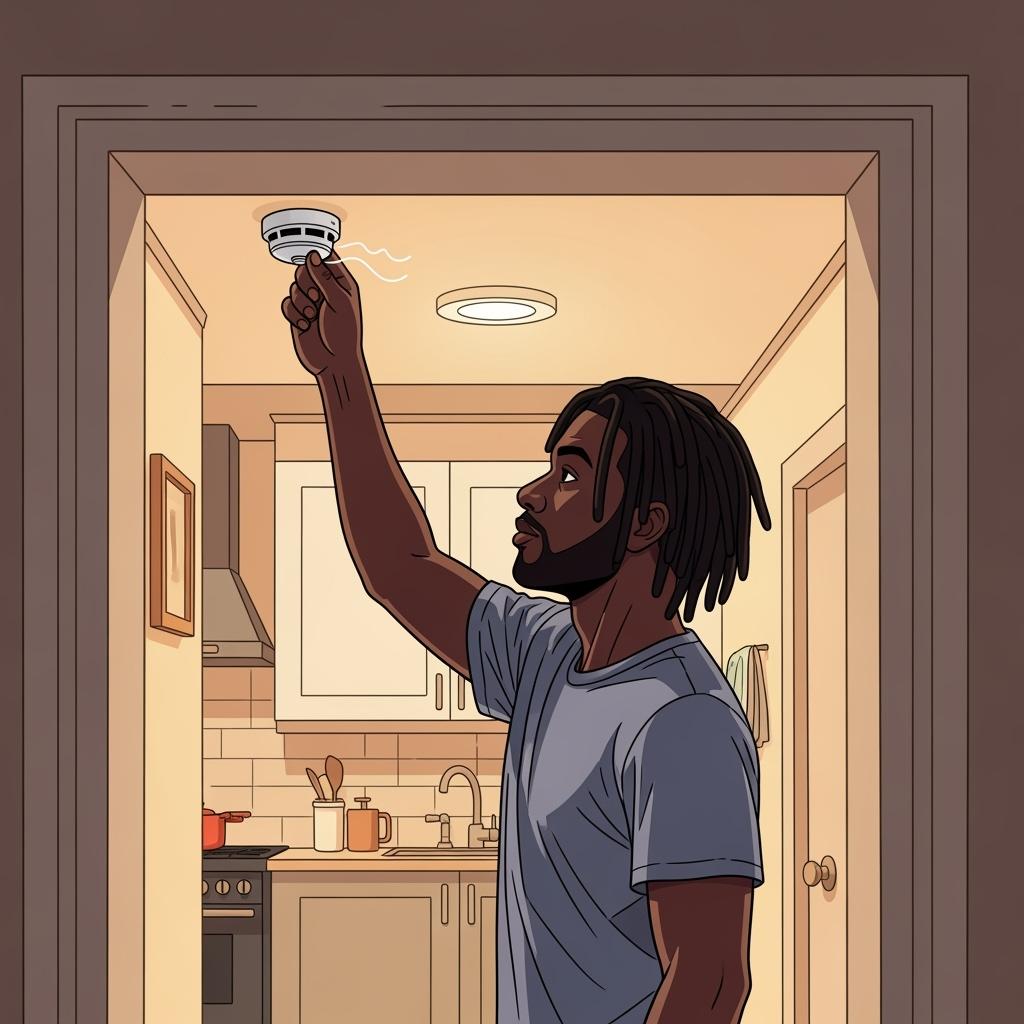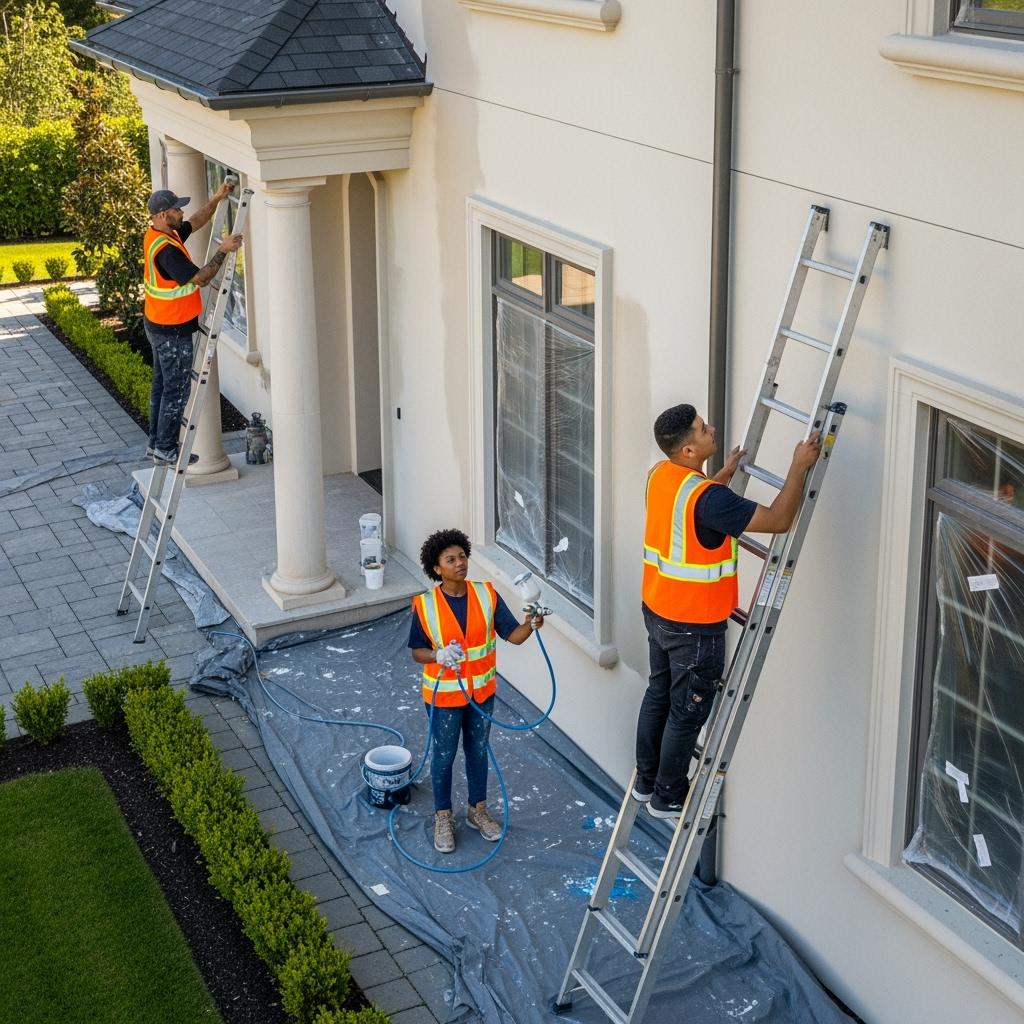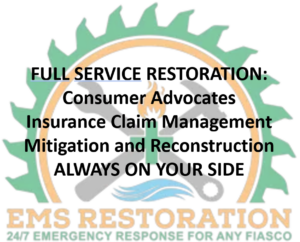Essential Home Maintenance Tip
Discover vital home maintenance tips and a detailed checklist to protect your investment. Ensure the health of your home with our expert guidance!


When you buy a home, it doesn’t come with an operations manual or guide. Many homeowners find themselves at a loss regarding the regular activities necessary to maintain the health of their home and protect their investment. We have prepared a quick guide below to help you ensure your home is well-maintained. We highly recommend adding these tasks to your calendar and setting them to repeat as frequently as necessary to keep up with the rigors of home ownership. If adding things to the calendar doesn’t work for you, consider printing off our checklist to hang in a utility closet for easy access and reminders.
Home Maintenance Tips
Tasks to Do Always
- Use Moisture Alarms –
Install moisture alarms under sinks, dishwashers, and water heaters to detect leaks early. They alert you to moisture, allowing for quick action to prevent water damage. Installation costs are low, often under $50, especially compared to potential water damage claims averaging $17,000. Wireless options can notify you while you’re away, adding extra security. - Avoid Using Appliances Overnight –
Limit the use of dishwashers and washing machines at night to prevent potential flooding from appliance failures. Such incidents can cause extensive damage, often affecting multiple floors in multi-story buildings. Preventative measures can save you from costly repairs and stress. - Address Mold Growth Quickly –
If you suspect mold, act fast and contact a professional. Mold can spread rapidly, posing health risks like respiratory issues, especially for vulnerable individuals. Delaying action can lead to increased damage and health concerns. Prompt intervention is essential to protect your home and health.
Monthly Tasks
- Change AC Filters Regularly –
Clean or replace your AC and furnace filters at least once a month to maintain efficiency. Clogged filters reduce airflow, leading to higher energy bills and increased wear on your equipment. Vacuum heat registers and vents as well to promote unobstructed airflow. This simple task can save you hundreds of dollars each year by improving system efficiency and extending the lifespan of your HVAC system. - Inspect and Clean Your Drains –
Regularly inspect and clean all drains, including sinks, tubs, and dishwashers, to prevent clogs from debris and buildup. Consider using drain catches in high-traffic areas to capture hair and reduce blockages. Cleaning these catches once or twice a week can save you from costly repairs associated with major clogs. Routine drain maintenance helps ensure smooth plumbing operation and avoids more significant issues down the line.
Quarterly Tasks
- Exercise Your Angle Stops –
Every 3 to 4 months, turn your angle stops on and off to prevent them from becoming stuck. If they are difficult to turn, drip water, or fail to shut off, it’s time for replacement. Ignoring these signs can lead to costly water damage. If you are unsure about replacing them, contact a plumber. Proactive maintenance of angle stops can save you thousands in potential repairs. - Check Your Water Filters –
Inspect and replace water filters—whether on your fridge, under your sink, or within a whole-house system—every 3 months to a year, depending on usage. For advanced systems, use a pressure gauge for reliable performance monitoring. If you’ve just moved in, replace all filters to ensure optimal water quality from the start. Regular maintenance of your water filters improves taste, quality, and helps prevent plumbing issues.






Biannual Tasks
- Test Smoke Alarms, Carbon Monoxide Detectors and GFI Outlets – Regular testing of these devices is crucial for maintaining a safe home and providing peace of mind. Keep track of test dates and replacement schedules to ensure your living environment remains secure.
- Smoke Alarms: Test monthly by pressing the test button until you hear a beep. If it doesn’t sound, replace the batteries. Replace the entire unit every 10 years to ensure proper function.
- Carbon Monoxide Detectors: Test monthly using the test button. If it beeps or shows a warning light, replace the batteries or the unit depending on its age. Replace detectors every 5 to 7 years for optimal safety.
- GFI Outlets: Test monthly by pressing the “Test” button; the outlet should trip and cut power. Press “Reset” to restore power. If it doesn’t trip, have a qualified electrician replace it.
- Clean Your Air Ducts – Clean your air ducts every 3 to 4 years to maintain indoor air quality and HVAC efficiency. This service typically costs between $60 and $250. If you have pets, consider cleaning more frequently due to hair and dander accumulation. Also, clean your dryer vent every 6 months to 1 year to prevent fire hazards and improve efficiency.
- Clean Your Gutters and Downspouts – Check and clean your gutters and downspouts at least once a month to prevent clogs from leaves and debris. Neglecting this maintenance can lead to serious water damage to your roof, siding, and foundation. If monthly cleaning is difficult, consider a seasonal schedule or hiring a professional service to ensure proper drainage and protect your home.
- Clean Your Exhaust Fans – Clean kitchen and bathroom exhaust fans and their filters every 6 months. Accumulated dust and grease can reduce airflow and efficiency, increasing energy consumption and shortening the fan’s lifespan. Regular cleaning also helps prevent mold growth in bathrooms, ensuring better indoor air quality.
- Maintain Your Crawlspace – Regularly check your crawlspace for moisture, especially after storms. Keeping it dry is vital to prevent mold and structural damage. If you find moisture, contact a restoration company immediately. Consider installing a dehumidifier or improving ventilation to reduce humidity levels. Proactive maintenance protects your home from water damage and mold.
Annual Tasks
- Check Electrical Cords for Any Wear or Damage – Regularly inspect your electrical cords for frayed wires, cracked insulation, or loose connections, as these can pose serious risks like electrical shocks or fires. Ensure plugs fit securely into outlets and replace any damaged cords immediately. Make checking your cords part of your routine maintenance to keep your home safe.
- Clean Your Chimney – Have your gas or wood-burning chimney inspected and cleaned at least once a year to prevent fire hazards, improve efficiency, and identify any structural issues. Regular maintenance reduces the risk of creosote buildup, enhances smoke escape, and ensures compliance with insurance policies. Prioritizing annual cleanings keeps your home safe and warms your space effectively during colder months.
- Seal Your Tile and Grout –
Seal your tile and grout once or twice a year to keep your surfaces looking fresh and prevent stains, bacterial growth, and deterioration. This simple maintenance task creates a protective barrier that repels spills and minimizes moisture absorption, promoting a healthier environment. Regular sealing extends the lifespan of your tile and grout, saving you money on repairs. Focus on high-traffic areas like bathrooms and kitchens to maintain their condition. Invest time in this practice to protect your home and enhance its beauty for years to come. - Recaulk Showers – Recaulk your tubs and showers once a year to prevent water damage and mold growth. This simple task typically takes about an hour and creates a watertight seal to keep water contained, reducing the risk of costly repairs. Regular recaulking also prevents mold and mildew, promoting a healthier bathroom environment and enhancing its appearance. It’s an easy DIY project that requires minimal materials, making it a quick yet impactful maintenance task. Make recaulking part of your routine to protect your home and maintain a pleasant space.
- Assess Your Plumbing – If you own an older home, be aware that plumbing systems usually last 25 to 50 years. As they age, components may fail, so regularly check key areas:
- Angle Stops
- Shower and Tub Faucets
- Pinhole Leaks
If you’re unsure about your plumbing’s condition, don’t hesitate to contact a plumber for a thorough inspection. This professional evaluation can spot potential problems before they worsen. If your home has underground plumbing, knowing the age and condition of those pipes is crucial, as aging underground pipes can lead to slab leaks that cause severe damage and high repair costs. Proactively assessing your plumbing and addressing any concerns helps ensure the longevity and functionality of your system, protecting your home from unexpected expenses.
- Maintain Exterior Paint – Maintain your home’s exterior paint every 5 to 8 years to protect wood surfaces from moisture and pests. Watch for signs of wear, like cracking or peeling, as these indicate potential moisture damage. Address issues promptly and gather quotes from professional painters to avoid costly repairs. Regular maintenance keeps your home looking great and protects your investment
- Maintain Your Siding – Inspect your siding at least once a year for signs of damage such as cracks, bubbling, or discoloration, as these can indicate underlying issues that may lead to costly repairs if left unaddressed. Contact a general contractor for an assessment if you notice any concerns, as early repairs can save you thousands and prevent the need for full replacements. Regular maintenance not only extends the lifespan of your siding but also enhances your home’s curb appeal and energy efficiency. Schedule your annual siding inspection today to protect your investment
- Evaluate Your Roof Condition – Regularly assess your roof’s condition, as most systems last around 25 years. Look for granular loss on asphalt roofs, check underlayment on tile roofs, and inspect screws on metal roofs for wear. Timely repairs or replacements are crucial to prevent costly damage. Stay proactive to protect your home
5 – 10 Year Task
- Replace Your Water Heater – Conventional water heaters last 6 to 12 years. Don’t wait for failure; replace yours proactively to avoid disruption and costly water damage. Watch for signs like age, rusty water, unusual noises, and leaks. Timely replacement ensures continuous hot water and improves efficiency, saving on energy bills


Thinking about a Kitchen Remodel? Call us NOW!
A Full Service Construction Company
- CSLB Licensed
- Bonded and Insured General Contractor
- IICRC Certified in Trauma and Crime Scene Clean up
- HAZWOPER 40 Certified
- Available to Respond to Most Calls Within the Hour
- Offers 5 and 10 Day Guarantee at Request



